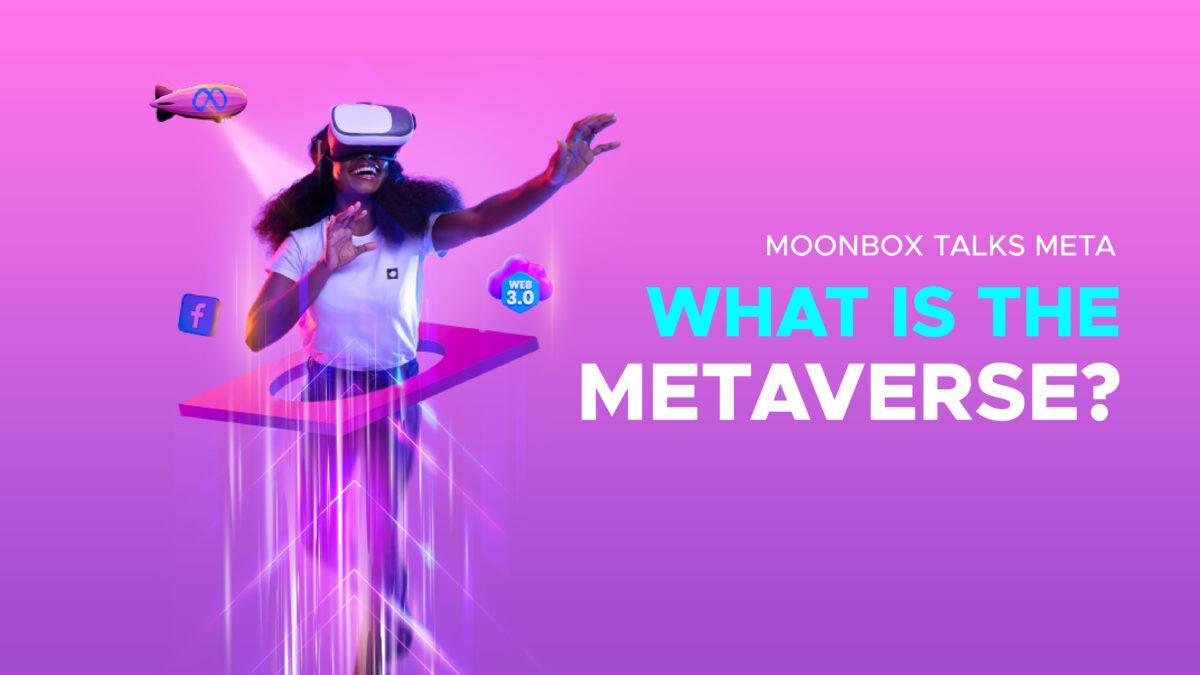You’ve probably heard the word ‘Metaverse’ being thrown around recently because it’s literally what everyone’s talking about these days. The hype is real because the next big evolution of the internet has arrived, and we think it’s a great time for all of us to explore this digital universe together!
If you’ve been hearing about the Metaverse but can’t find a precise definition of it or how to navigate through it – here are some insights that should help!
What is the Metaverse?
The Metaverse is still a slightly vague concept to many. The Oxford Learner’s Dictionary defines it as ‘a virtual-reality space in which users can interact with a computer-generated environment and other users’. But in reality, the Metaverse is so much more than that – because it’s constantly evolving.
Metaverse 101
The term ‘Metaverse’ is derived from two words; ‘meta’ which means ‘beyond’ and ‘verse’ derived from the term ‘universe, thereby saying its a virtual world, that goes beyond the real one. This evolution of the internet will witness the rise of online 3-D or virtually integrated worlds wherein users can access virtual reality and augmented reality experiences. In simplified terms, it is a simulation where you can socialise, conduct business, and own digital properties like real estate and literally do everything that you can do in the real world! It is an upgraded version of social media that is built in the virtual world and connected via blockchains that allows you to own and live in it.
When did it all start?
The first use of the term ‘Metaverse’ was in 1982, in Neil Stephenson’s cyberpunk novel, Snow Crash. However, the novel didn’t portray the Metaverse in a very positive light, and the excitement for the future didn’t catch on.
As a concept, the metaverse isn’t new. It dates back to 1838 when binocular vision combined two images, one for each eye, to make a single 3D image. Another mention of the concept was in 1935, when the science fiction book, Pygmalion’s Spectacles, was published. The main character explored a fictional world using a pair of sensory goggles. Then came VR machines in the 1970s.
Later came multiple versions of VR machines and headsets, including the Oculus VR, bought by Facebook in 2014. This was led by AR, XR, smart glasses, and much more. 30 years since its first mention, the Metaverse has finally taken over!
Why is Metaverse part of Web3?
Anything and everything that’s digital begins with the web. It started way back when the World Wide Web came into existence allowing viewers to go online and see pages and sites. When its first version—or Web 1.0—was created, it was designed to help people find information, thereby making it a read-only Web. This version was dedicated to data research, and interactivity was very limited. However, this paved the way for digital communication and soon after came Web 2.0, which connected people and created a whole new wave of reaching a target audience. Social media, blogging, vlogging, and every digital activity we are so accustomed to right now is part of Web 2.0, terming it the ‘participative social Web’.
Now, the demand for decentralisation, openness, digital safety and better utility has led to the rise of Web 3.0 – the ‘read, write, execute Web’. Web3 moves away from controlled platforms like Facebook and Twitter, and towards more decentralised, autonomous platforms. It connects users with the power of Artificial Intelligence, Machine Learning, Extended Reality and Mixed Reality. Web 3.0 powers you to do everything in the virtual world, just as you’d do in the real world.
In simpler terms, Web3 and Metaverse cannot be used interchangeably. The Metaverse is still an internet-based system, and Web3 technologies only make it possible to access the Metaverse, much like you need a key to access a door.
What next?
The Metaverse isn’t just a buzzword. It’s a virtual world that everyone’s begun existing in already. Whether you’re an individual, a brand, or a company, you’re going to have to learn to co-exist in this phygital world as both gain equal importance.
Brands are already in the Metaverse
To adapt to the new consumption habits and add value to lives, global brands like Nike, Adidas, Gucci, and plenty others have already started delving into Metaverse product designs. Giants like Disney are also considering virtual worlds that make for extraordinarily engaging experiences!
At a local level, hospitals, government bodies, the telecom sector and many, many more in the UAE have built platforms in the Metaverse to keep their audience engaged and enhance experiences.
In our upcoming Moonbox Talks Meta series, we’ll be unravelling a lot more about the Metaverse. Brands have already begun investing in services that’ll help take them to the Metaverse. Don’t forget to take a look!

